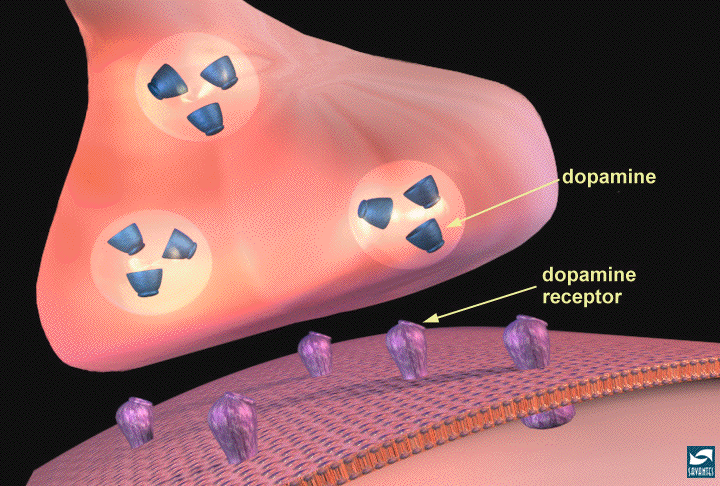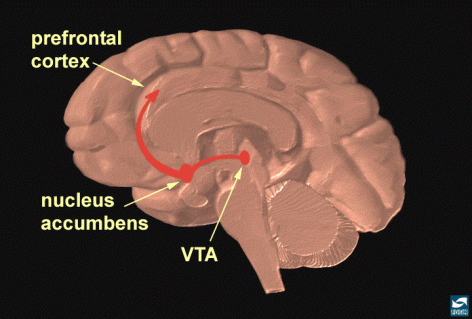 This slide illustrates how chemical messengers, such as dopamine, transmit information from brain cell to brain cell.
This slide illustrates how chemical messengers, such as dopamine, transmit information from brain cell to brain cell. The rat in this slide is self-administering cocaine.
The rat in this slide is self-administering cocaine. This slide shows the prefrontal cortex, the nucleus accumbens, and the ventral tegmental area (VTA) - brain structures associated with the rewarding effects of cocaine.
This slide shows the prefrontal cortex, the nucleus accumbens, and the ventral tegmental area (VTA) - brain structures associated with the rewarding effects of cocaine.Two free public education slide presentations about the brain's response to a variety of drugs are now available from NIDA. The presentations are designed for health care practitioners, teachers, and scientists to use in clinical, community, and high school settings. The slides are the core components of two teaching packets that include a narrative script to accompany the slides, background information and instructions for the presenter, and additional references.
The Neurobiology of Drug Addiction is a four-part presentation on the basic function of the brain, the neurobiological basis for addiction, and how heroin and cocaine affect the brain. The presentation is designed for a general adult audience and can be modified to accommodate different knowledge and educational levels. The first part introduces the brain and presents basic neurobiology; the second part discusses how the brain's reward pathway reinforces certain behaviors with pleasurable feelings. The third and fourth parts show in detail how heroin and cocaine act in the brain and how they disrupt the reward system's normal activities.
The Brain & the Actions of Cocaine, Opiates, and Marijuana is a three-part slide presentation designed primarily for high school students that describes how three drugs - cocaine, opiates, and marijuana - work in the brain. The first and second sections are similar to the first parts of the Neurobiology of Drug Addiction presentation, discussing the brain, basic neurobiology, and how the reward pathway functions. The third part presents the mechanism of action for each drug and describes how each affects the reward system.
The scripts for both presentations were developed to be used as outlines so presenters can customize presentations for different audiences. Each presentation is designed to take approximately 30 to 40 minutes, plus additional time for audience questions.
The teaching packets can be previewed at and downloaded from NIDA's home page on the World Wide Web (see links above). Complete instructions are given for downloading and producing the slides for these presentations.
